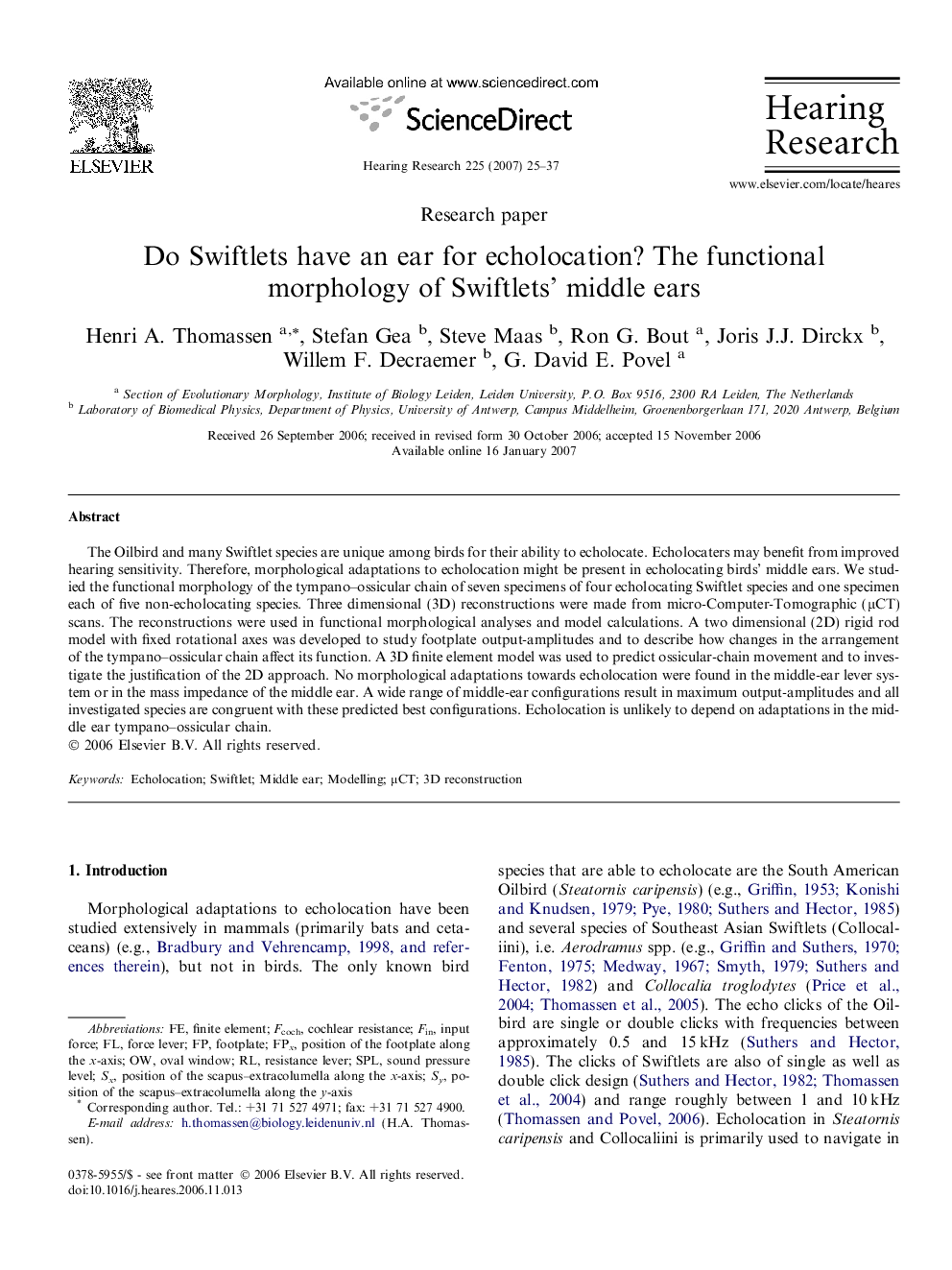| Article ID | Journal | Published Year | Pages | File Type |
|---|---|---|---|---|
| 4356243 | Hearing Research | 2007 | 13 Pages |
The Oilbird and many Swiftlet species are unique among birds for their ability to echolocate. Echolocaters may benefit from improved hearing sensitivity. Therefore, morphological adaptations to echolocation might be present in echolocating birds’ middle ears. We studied the functional morphology of the tympano–ossicular chain of seven specimens of four echolocating Swiftlet species and one specimen each of five non-echolocating species. Three dimensional (3D) reconstructions were made from micro-Computer-Tomographic (μCT) scans. The reconstructions were used in functional morphological analyses and model calculations. A two dimensional (2D) rigid rod model with fixed rotational axes was developed to study footplate output-amplitudes and to describe how changes in the arrangement of the tympano–ossicular chain affect its function. A 3D finite element model was used to predict ossicular-chain movement and to investigate the justification of the 2D approach. No morphological adaptations towards echolocation were found in the middle-ear lever system or in the mass impedance of the middle ear. A wide range of middle-ear configurations result in maximum output-amplitudes and all investigated species are congruent with these predicted best configurations. Echolocation is unlikely to depend on adaptations in the middle ear tympano–ossicular chain.
